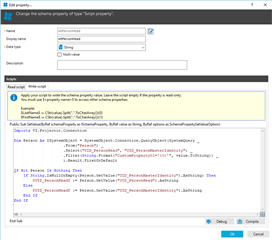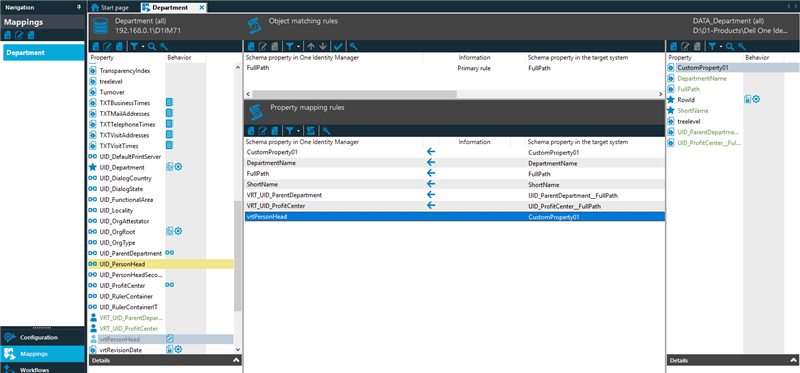Hi all,
I'm synchronizing a csv with the department objects
in my csv file I had a code for department manager that is equal to a code in field CustomProperty01 on Person object.
With the property "Key resolution by reference" I can insert the UID_Person in UID_PersonHead on Department object but...
If Person has a UID_PersonMasterIdentity is not empty I need to insert in UID_PersonHead of Department that UID.
So if a Person as a masteridentity attached to it I need to insert that person as department Manager.
I don't know how to do it in Synch Editor I thinkg with a script property but I can't figure out how.
Thanks
Mik





